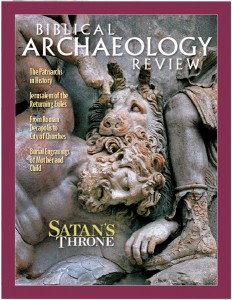Another View: Small City, Few People
Professor David Ussishkin claims that the city wall of Jerusalem built by the exiles returning from Babylon, as described in the book of Nehemiah, enclosed an enormous area co-extensive with the city wall that enclosed Jerusalem when the Babylonians conquered and burned it in 586 B.C.E. (“Big City, Few People: Jerusalem in the Persian Period,” BAR 31:04). Ussishkin is plainly wrong.
Ussishkin recognizes that the returning exiles “were neither wealthy nor particularly skilled.” In addition, he concedes that there were “few returning exiles.” He also accepts Nehemiah’s statement that the rebuilding of the wall was completed in 52 days. Indeed, everyone agrees that the detailed description in Nehemiah 3 regarding the course of the wall and its towers and gates is authentic and based on a primary source, reflecting an intimate knowledge of the topography of the city.
All this points to the conclusion that most scholars who have studied the problem have reached—namely, that the city wall that the returning exiles rebuilt enclosed only the 10 or 12 acres known as the City of David (the original Israelite settlement) plus the area around the Temple Mount to the north.
Ussishkin claims that the city wall built by the returning exiles at that time also included the Southwestern Hill, although most of the city enclosed within his suggested wall—covering about 150 acres—was uninhabited. To quote him:
Not all of the area within the Persian period walls was inhabited by the few returning exiles. Large areas of the city remained unpopulated [i.e., mainly the Southwestern Hill]. Most of the returning exiles lived in the City of David and the area near the Temple Mount.
Already a library member? Log in here.
Institution user? Log in with your IP address.

